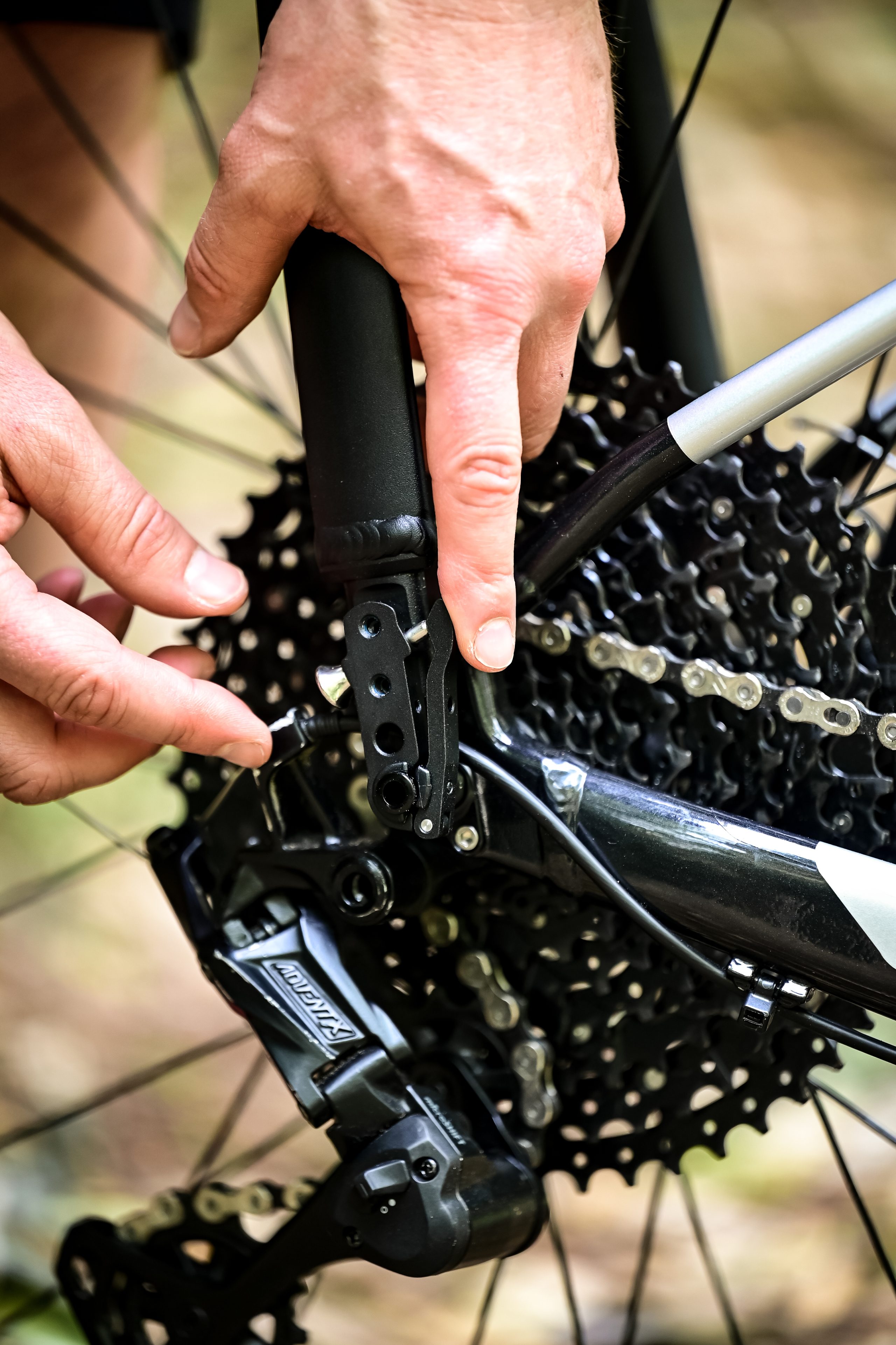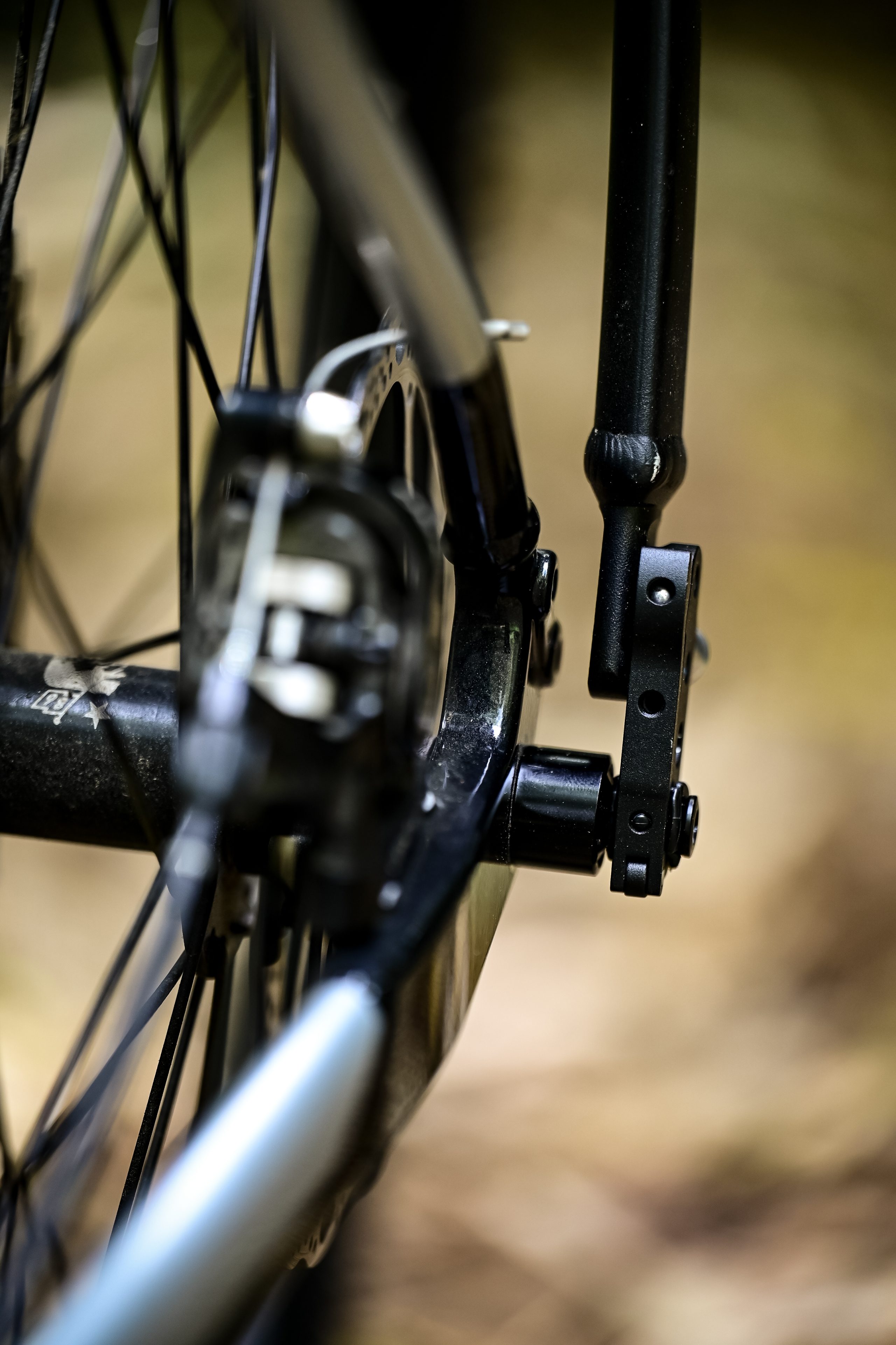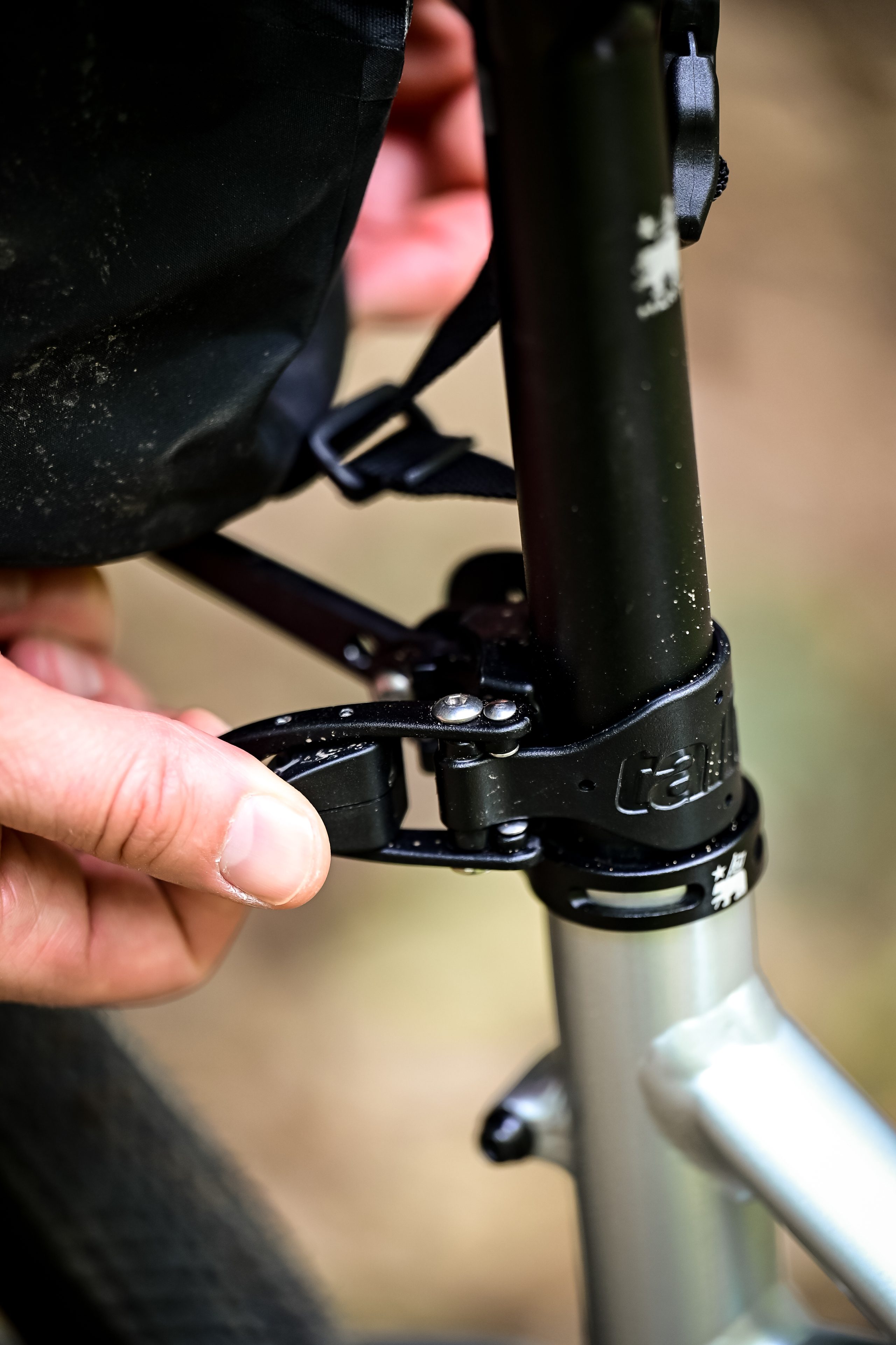RRP: $595
Distributed by Tailfin
Reviewed by Lance Pilbrow
Bikepacking is one of those endeavours where you really just don’t know what you don’t know, when you start out. So many different setup options to choose from. So much gear to take! And you never really know how a piece of equipment will perform until you’re riding it fully (over)loaded down a rough trail, in the pouring rain.
Most people start out bikepacking with some sort of seat bag system in the mix. Usually strapped under the seat rails and also around the seat post. There are lots of variations of these out there, some better than others, but mostly they work fairly well. I’ve used the Revelate Terrapin model extensively and have generally been pretty happy with it. However, there are a few drawbacks to this style of rear bag. Firstly, they often tend to wag around like a happy dog. Again, some do this worse than others (smaller bags and less overloaded bags are less affected by this obviously). They also can be fiddly to mount, and over really rough terrain the nature of these designs is that they want to bounce away from where they are being held – they are fighting gravity to stay in place nicely. Lastly, seat bags and dropper posts don’t always get along. I’ve used these conventional style bags a fair bit and, for the most part, they have worked OK; I just accepted the flaws in the overall concept as something to live with or ignore.
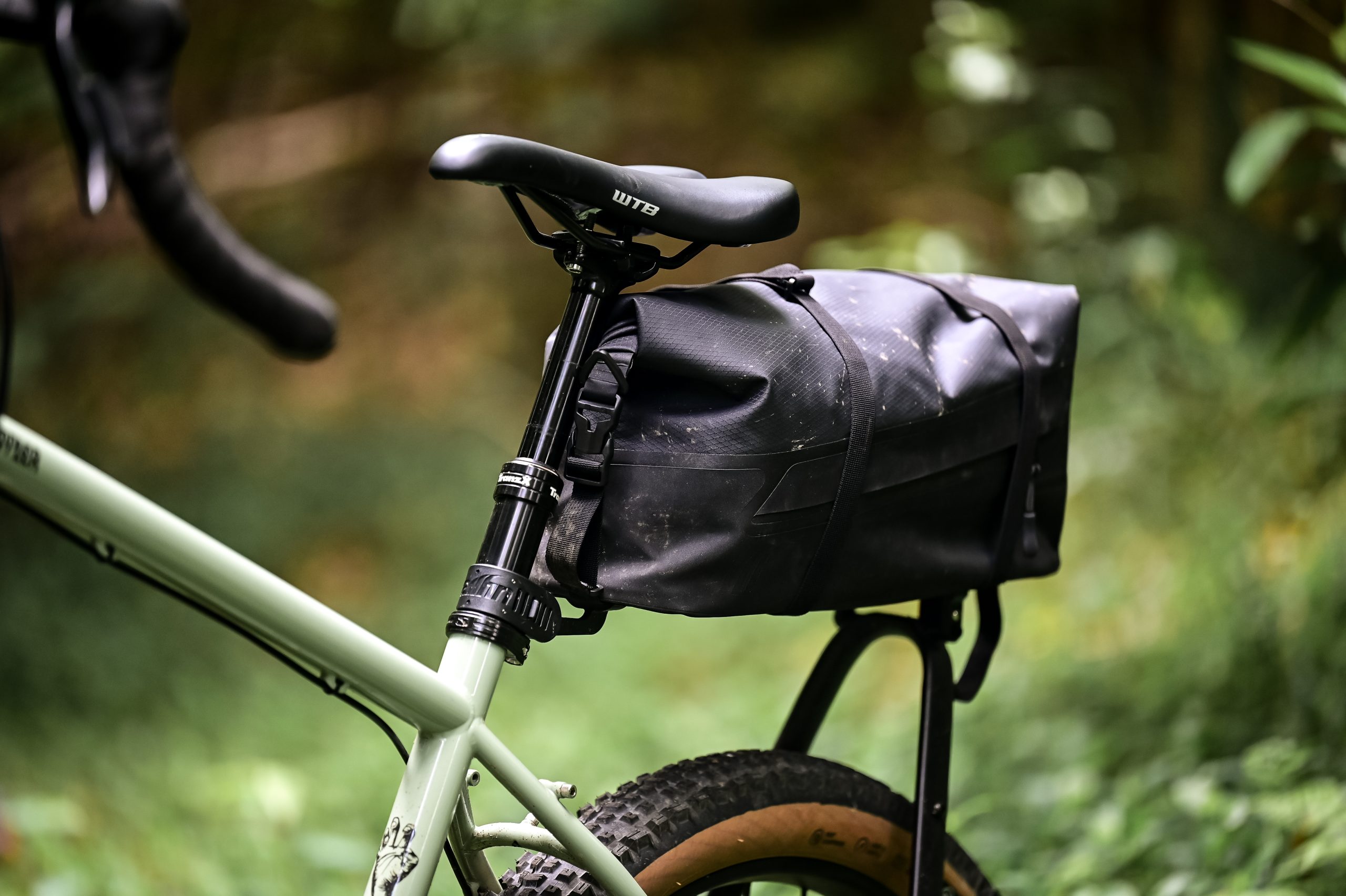
Then the Tailfin Aeropack showed up. What was this? Now we are back to a carrier? In one sense it seemed like a strange step backwards – I haven’t used a carrier since my days of very overloaded cycle touring around Europe. But, on closer inspection, this is no ordinary carrier. There is a lot going on here, so buckle in for some detail.
Tailfin have made what can only be described as the Lamborghini of bike carriers and bags.
The Aeropack is a one-piece integrated bag and carrier system that promises to take you to carefree, gear-stowing, bikepacking nirvana. (Well, they don’t actually claim that, but I think that’s how they should market themselves).
Firstly, no, it’s not an ordinary carrier. In fact, it’s clear that Tailfin have tried to re-engineer every part of the rack and bag to work as one integrated unit. Let’s dive into how it’s different. Firstly, it’s not your regular steel or alloy tubing; the whole structure revolves around a sexy svelte ‘arch’. It looks sleek and modern. In the case of the Aeropack (as Tailfin have quite a few variations amongst their racks) the horizontal part of the rack is actually integrated into the actual bag, so you don’t ‘attach’ a bag to the rack – the bag is the rack. This means you never have to secure a bag to the rack, ever.
However, it’s down at the lower mounting point where Tailfin have really created something new. Instead of relying on simple carrier mount braze-ons (that may not even be on your new fancy carbon frame) they have created their own quick-release axle mount system. It works like this: first, you replace the axle that is currently on the bike with their own axle – included when you order the rack is either the correct replacement 12mm axle to match your frame (you’ll have to know the thread pitch and select the right one) or, their Universal Thru Axle. This is quite a cool modular axle system that allows you to easily replace your stock axle with one of theirs, but comes with changeable threaded ends to match the three most popular thread pitches used these days. (This would be a great option if you are wanting to future proof your setup against different bikes that may use different axle pitches.) We had the Universal Thru Axle; in the axle box is one half of an axle, then you choose one from the three other ‘ends’ supplied, which are the most popular thread pitches, so it should suit the majority of most modern bikes. We tested the Tailfin on a Marin Gestalt that we happened to also have on review. The Marin axle was conveniently labelled with its thread pitch, so we simply matched that to the also-labelled Tailfin part, threaded them together and we were all ready. The new Tailfin axle that your bike will now be sporting is actually wider than your standard axle, and has ‘stubs’ sitting out wider than your frame. It’s these stubs that the Tailfin rack attaches on to. So, once you’ve got your axle in, you simply attach the ‘fast-release dropouts’ to the bottom of the arch, and these simply click on to your new axle stubs. Once the fast-release dropouts are installed, they attach to the stubs tool-free. Do up the seat mount and you are ready to roll.
The benefit of the whole system is that, unlike a traditional carrier, where all the weight is on the small braze-on screws (that in my experience of cycle touring can come undone catastrophically), here the weight is now sitting securely on the whole axle. Also, compared with a regular bikepacking seat bag, it’s not fighting gravity to stay in place over every bump. And this really is where the Tailfin shines: as soon as it’s on, it’s on. It’s really not going anywhere. Even the best seat bags typically need a bit of faffing and yanking on straps to get them tensioned up nicely, and even then they always seem to find a way to start wagging around after a while. At the seat end, Tailfin has a great quick-release system that connects via a locking system that cams up to tension. It’s easy and intuitive and just works. So, once it was on, it was out for a ride. The Tailfin Aeropack is honestly rock solid and totally silent. Nothing moves, you honestly do not know it is there. So far, so good.
The bag itself (if you can call it that, because the bag and rack are one piece) is also a quality piece of equipment. It’s 20 litres, which in itself is pretty massive (again, if we are comparing against seat bags). It’s a roll-top system, so you can roll it down to suit how much gear you are carrying. Twenty litres might be a pretty generous estimate in my opinion. I think you’d struggle to have the top rolled down much with 20L of gear in there, but it’s still a big bag that can conveniently become a small bag. I really liked the overall simplicity of the system. One big pocket that rolls down securely, and one zipper on either side. One of these has its own small pocket for your keys or wallet, and the other accesses the main compartment so you can get to stuff that might be inside and lower down, but without having to open up the whole roll top and take stuff out to get to what you want. The material is called a ‘Nylon & Hypalon Laminate’, and it is high frequency welded at the seams. It’s got a sturdy feel to it that is like a nice balance between lightweight and robust. It’s also got a smooth finish that sheds mud and cleans up easily. Once it’s rolled down, two straps wrap over the top and buckle together to keep everything cinched down. These are also handy for stowing things under. With everything loaded up, I was once again impressed by how secure the whole system is.
One key difference from other carrier systems is that when you get to camp and want to take your bag off, you’re not just taking your bag off. You’re taking your whole rack off too. It sounds like a faff when you say it but, again, because of the fast-release dropouts and quick release seat clamp, it all comes off in a matter of seconds. I was impressed with just how well the whole system actually works together. A few quick trips only reinforced this. It really is an outstanding system, and it’s really hard to think of going back to a seat bag ever again. I’m sure there might be an occasion where they are better… I’m just struggling to think of one?! Actually, I can think of one, but I’ll get to that in a moment.
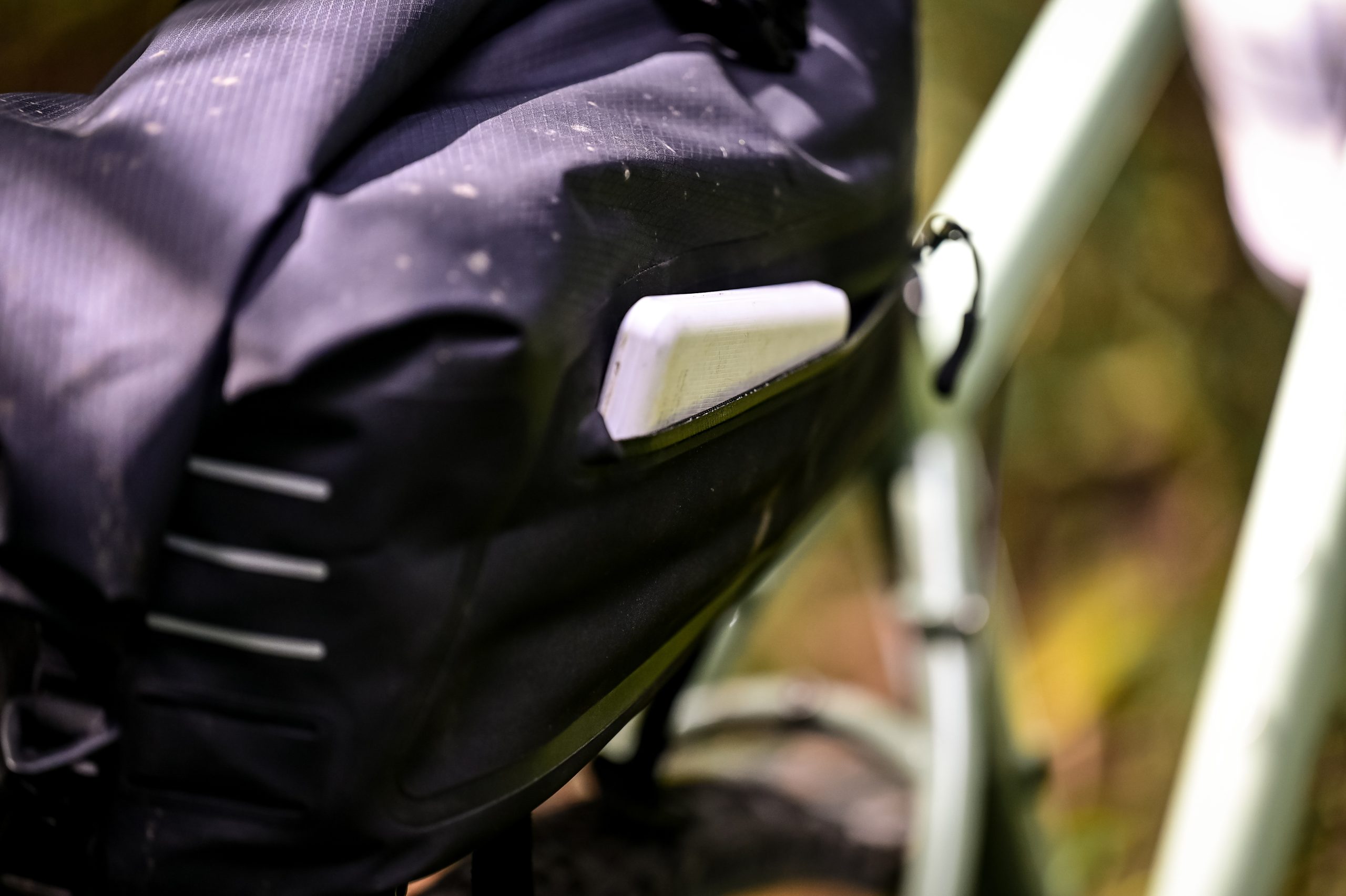
I should also mention that the whole system articulates at the rear. That connection is a pivot, and the seat mount also has an integrated pivot point so, yep, that means the whole system will work on your full suspension bike too. Oh, and because it’s not attached to your seat rails, it will also play nice with your dropper post …. to a degree. Obviously if you slam your post down, your seat will eventually hit the bag.
It wasn’t quite all plain sailing, though. In an effort to see just how compatible it all was with varying setups, I tried it on the Surly Ghost Grappler, also on review. Snag #1. The Universal Axle System isn’t compatible with Surly axles. Surly’s use their own weird Gnot-boost axle system that involves an axle and a threaded nut type thing at the other end. That won’t work with this. All is not lost though, because Tailfin does make a ‘stub’ that will use your braze-ons instead of your axle. You get the benefit of still being able to use the fast release mounts, but you don’t get the benefit of all the weight being on the axle. Or, you can ditch the fast-release mounts and just screw the rack straight into the carrier braze-ons. However, this way you don’t get the benefit of the easy-on, easy-off that the fast-release mounts make possible.
Also, on both bikes we tested this on, the gap between the seat post and the front of the bag was too tight. The bag essentially tucked under the seat when stowed, and this made it hard to open it up properly – the seat was kind of in the way. Different frame shapes are obviously going to handle this differently, so it won’t affect everyone. But, this also made it quite a bit harder to roll it up nicely as, again, the seat was in the way. What is more, if you’re exploring this rack to allow you to make use of your dropper…well as we had it, as soon as we dropped our seat it squished down on the bag – not ideal. This has clearly been an issue that other users have fed back to Tailfin because they also make an extended seat post connector that will push the rack 50mm further away from the seat post. I’ll be ordering one of these and it should solve the problem nicely. So, those are some pretty small gripes that already have solutions. But then there is the final issue.
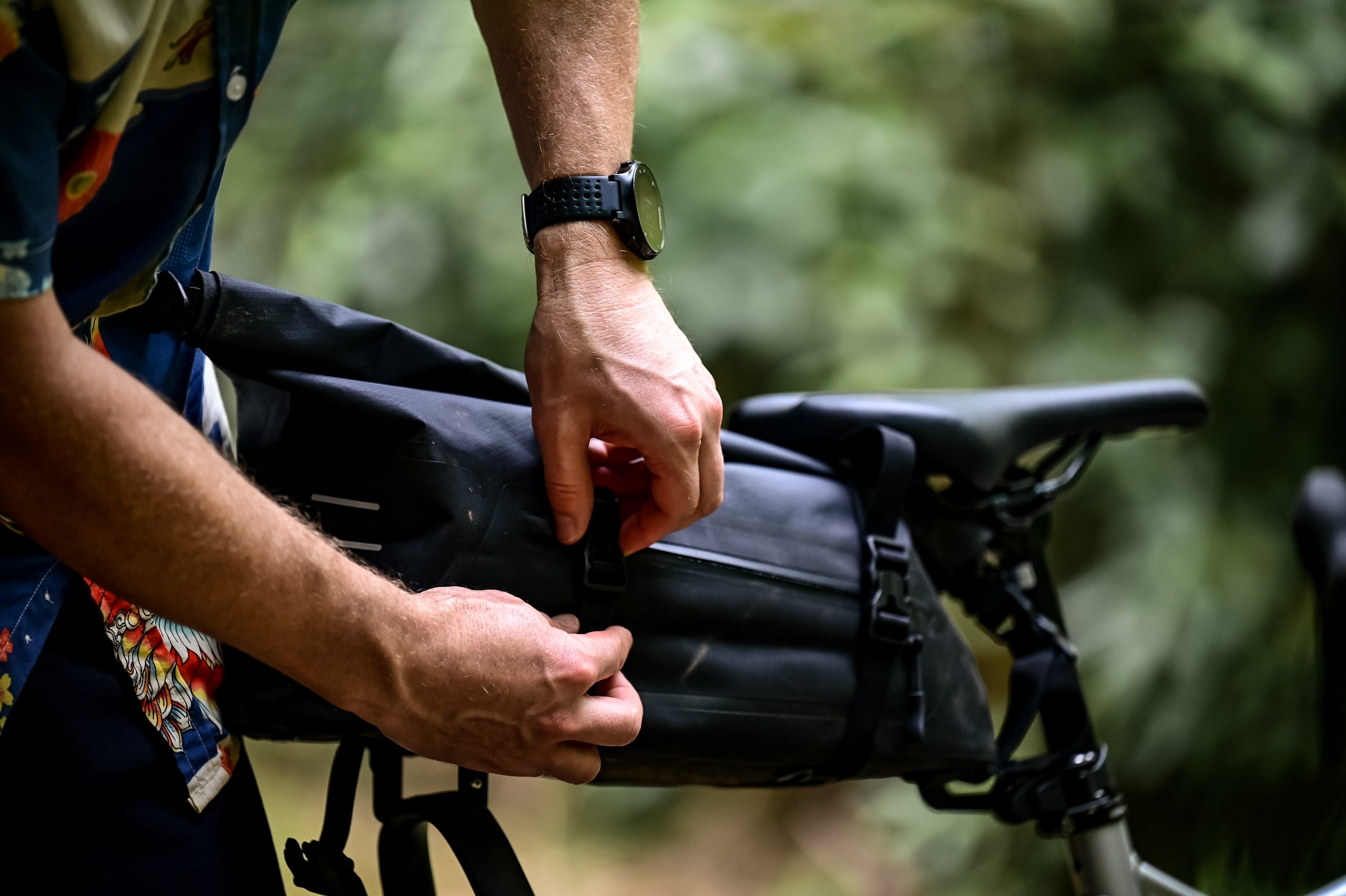
I mentioned some people are happy to pay for quality gear. Well, take a deep breath. The alloy Aeropack, as we tested, it will set you back $595. Add in the seat post extender and you’re up to $610. That is, well, an eyewatering amount of money to spend on a piece of bikepacking kit. If there is a more expensive rack/bag on the market, I’m not aware of it. My very capable Revelate seat bag retails for around $340 by comparison, the also-popular Aeroe rack system will set you back around $310 for a rack and a bag (I haven’t used these so won’t make a comparison). So, $610. The big question is, of course, is it worth it? Well, that depends on what you’re looking for and what you are trying to solve. Firstly, it is exceptionally well constructed. Every single piece was perfectly machined, and certainly feels like it has been a ‘no expense spared’ kind of endeavour for the creators. (While I’m on this, if ‘no expense spared’ is your kind of thing, they do make a carbon version too, for $700.) Secondly, for what it is (an incredibly rigid system) it is light, 895 grams to be exact (and the carbon version saves another 120-odd grams). A quick google shows me that, by comparison, the Aeroe system, with their largest 12L bag, would weigh in at 1287 grams, and is only recommended for 4kg. The Tailfin has a 20L capacity and is rated for 9kg, weighing almost 400gm less. Lastly, it actually has some other cool modular features. You’ve probably noticed the 3-pack mounts on the arch. They can be used to add additional 5 or 10 litre mini panniers or, as we also have on review, their Cargo-cage. It’s great to have the versatility to add things on, and I found the Cargo-cage a great addition; an easy way to increase your water carrying capacity.
So is it worth it? I think that, despite the sticker price, this will appeal to a niche of people. Let’s say it’s $300 more than another way of carrying your gear. If you’re planning a major expedition like Tour Aotearoa, or Tour Divide, you are spending thousands of dollars on these jaunts as it is. And that’s assuming you’ve already got a great bike! All the gear, the food, the travel… it adds up – fast. So, in the scheme of say, the couple of thousand dollars you are probably committing to ride Tour Aotearoa, an extra $300 might not be the end of the world. Once you’ve had gear fail on you, or you’ve just been frustrated at a piece of gear that looked great in the shop but is functionally a pain to actually use day in day out, you tend to be able to justify spending a little extra to get stuff that just works.
I was really impressed by the Aeropack. It is rock solid when you are underway and, after using a few different systems over the years, I can really appreciate both the quality of what Tailfin have created and just how hassle-free the whole system is to use. It almost makes packing your bags something to look forward to – which is truly saying something.


